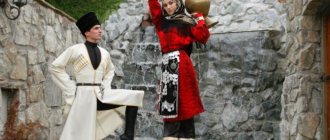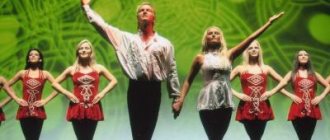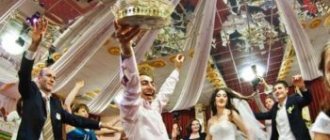Modern holidays and traditions of Moldovans continue to inherit the ancient rituals and customs of the ancestors of this people. Moldova has a rich history, and the culture of its inhabitants is associated with the veneration of nature, great patrons, and famous compatriots.
Moldovans are proud of their region, strive to preserve national traditions, contribute to culture, and they succeed very well. These people are famous for their cordiality and hospitality, which is noted by many guests of their country. What customs is Moldova famous for? What craft became her symbol? And how do Moldovans celebrate their holidays?
There are many interesting customs on Moldavian holidays
Wine is the main pride of Moldova
The first thing that comes to mind when mentioning Moldova is excellent wine and endless vineyards. Even looking at a map of the country, you can see the outlines of a bunch of grapes. Here the Wine Festival at the beginning of October is a national celebration.
On this day, which is held under the patronage of the president himself, folk festivities take place. People sing, dance, watch performances of folk groups, have fun and, of course, drink wine with amazing taste.
A beautiful ancient legend is associated with grapes and storks (another one of the symbols of Moldova). When the Turkish Janissaries tried to conquer the Gorodeshty fortress, the defenders of the homeland fought to the death. Strength was running out, provisions and water were running out, but the proud Moldovans fought to the last. And suddenly white storks appeared in the sky, they were visible and invisible, and each one carried a bunch of grapes in its beak.
The surprised conquerors froze, and the warriors - the defenders of the fortress - got enough of the grapes and continued the battle with redoubled force. The fortress was defended, and the white-winged stork with a bunch of grapes in its beak became a symbol of freedom and happiness.
Moldova is an agricultural country, here every farmstead has its own vineyard and cellar for storing wine. Cultivating vineyards and making wine is both a source of income and a tradition preserved over many centuries. Feteasca Alba, Feteasca Regale, Rare Neagra are the most famous varieties of wine that the country produces for export.
Wine is the main symbol of Moldova
If you decide to visit Moldova, then, without a doubt, you will meet hospitable and open people there. Such traits are inherent in the mentality of Moldovans. They sacredly preserve the heritage of their ancestors, but are always interested in learning about the culture of other countries. The owner of the house brings bread, salt and a glass of excellent wine to his guest.
It was wine that became the unspoken symbol of Moldova, and its winemakers and vineyards glorified their region throughout the world. Interestingly, there is even a special day dedicated to this drink, the Wine Festival. It is held in October, when the grape harvest has already been harvested and the new year's wines are ready.
Moldovans note that the main goal of the holiday is to introduce people to the culture of wine consumption, which is very important. At the Wine Festival, everyone can taste wines for free and, remarkably, even visit wineries and get involved in the production process.
Song and dance traditions of Moldova
Doinas and Kolindas are Moldovan folk songs, unusually beautiful and melodic, and are still used in folk rituals - weddings, Epiphany, Christmas and many others. The lyricism and fluidity of doina are especially expressed in female and ensemble singing. Initially, they were the melodies of shepherdesses; later they were reborn into one of the symbols of national culture.
The fiery Moldovan folk dances - jok, moldovenyaska, hora - are known to everyone. In Soviet times, the dance group “Zhok” shone on world stages. Nowadays you can admire folk dances at national holidays and art festivals.
Evgeniy Doga , a Soviet composer, author of the beautiful “Waltz” from the film “My Affectionate and Tender Beast” , is inextricably linked with Moldova . Moldavian singer Nadezhda Chepraga, a popular performer of pop and national songs in her time, was brought up on folk tunes and unique traditions of song culture.
The song and dance rituals of the Moldovans are carefully and lovingly preserved as the greatest value. You can still see them, for example, at wedding celebrations. Folk music creates a joyful, uplifting mood. Both newlyweds, parents, and guests enjoy singing and dancing to music played on folk instruments (fluer, nai, cymbals, kobza).
Family traditions of Moldovans
With the passage of time, many customs undergo changes, but the Moldavian wedding has become one of those holidays where even ancient rituals are sacredly preserved. On the eve of the celebration, the bride and groom choose a married couple who will become their good mentors.
Subsequently, the young family must listen to the advice of their “imprisoned parents.” An equally interesting wedding ceremony is called Masa Mare (Big Table).
It involves the process of giving gifts to newlyweds. Each guest must tell about his gift and say a wish to the young couple. Most often, the most significant gift is from the parents who are the first to start Masa Mare.
When there is a new addition to the family, Moldovans organize the ritual of kumetriya. This is baby baptism. A child can have a large number of godparents, up to 50 people. The parents give each of them rolls, and in return they bring gifts to the little godson.
Martisor Holiday
The spring holiday of Martisor is considered one of the most beautiful traditions in Moldova. It is celebrated on the first day of spring and is also associated with a folk legend. Spring, coming into its own, cleared the ground of snow to help the first flower, the snowdrop, emerge. Winter, not wanting to give way, got angry and launched a blizzard on the beautiful Spring. She, protecting a snowdrop from the wind, scratched herself on the thorns of a thorn tree. Drops of blood fell on the snow.
The symbol of the holiday is considered to be decorations woven from red and white threads - martisors. Residents of Moldova give them to each other in honor of the onset of spring. These delicate decorations are worn for a whole month, and at the end of March they are hung on trees in the forest, while making cherished wishes. It is believed that they always come true.
Miraterra
Moldavian folk holidays and customs continue the traditions inherited from their ancestors, uniting the ethnic group and promoting its self-determination. Holidays in the country have a constant or annually changing date; they are usually celebrated for one or several days, and they are dedicated to divine creatures, outstanding people, birds, animals, plants, and significant events. Over the centuries-old history, Moldovans have ennobled their lives with cheerful and colorful holidays, full of deep meaning.
The pattern of holidays and customs in Moldova is quite complex; it includes various traditions and rituals, many beliefs and superstitions. Therefore, researchers have not yet come to a consensus and a comprehensive classification.
The day of celebration, established in memory of any important and significant events, is usually accompanied by festivities, feasting, and can officially be declared a day off. Holidays dedicated to the most important events in the history of the country are recognized as state holidays: Victory Day over Fascism - May 9, Independence Day of the Republic of Moldova - August 27, Mother Language Day - August 31. Official ones include secular and certain religious Orthodox holidays.
New Year is one of the public holidays of the republic. This is the most popular and large-scale holiday in the country. According to tradition, it is celebrated annually on the night from December 31 to January 1 with family or close friends. In addition, colorful folk festivities take place before and after the New Year.
In Moldova, the New Year rapidly gained popularity during the period of the spread of Soviet views. As the main public holiday during the Soviet period, it quickly overshadowed various Christmas celebrations. Most of the modern New Year traditions in Moldova were established precisely in these years, and therefore they often resemble the traditions of celebrating the New Year in Ukraine and Russia. Residents of the republic still celebrate the arrival of the New Year twice - the first time at 22:00 Moscow time, and the second time at 24:00 local time.
In the squares of large cities, where Christmas trees are installed and the streets are decorated, folk festivities take place. The most elegant one in the capital of Moldova, Chisinau, is Stephen the Great Avenue. The tradition of putting small pieces of paper with New Year's wishes into baked goods is specifically Moldovan. People eat New Year's placintas (pies), take out papers with fortunes and find out what awaits them next year.
https://flic.kr/p/5PcHgz
Since Moldova is predominantly an agricultural country, rural New Year traditions and customs, celebrated according to the old style on January 14, are preserved to this day. So in the villages, twelve national dishes are laid on the table (according to the number of months), and kolivo (kutya) and kalach are placed in the center.
Also in rural areas, the custom of accepting congratulations from mummers moving from house to house on New Year’s Eve has been preserved. This campaign is led by a man dressed in a goat costume, which personifies evil spirits. The imminent approach of evil spirits is announced by satellites ringing bells and also beating a bugay - an unusual ancient instrument resembling a drum, in which a rope and a stone create a loud noise.
Christmas in Moldova, as in all Orthodox countries, is celebrated on the night of January 6th to 7th. The Christmas tree is a traditional symbol of the holiday, but in Moldova most people call the forest beauty “New Year’s” because they decorate it on New Year’s Eve. Among the unique Christmas customs, carols stand out. Children and even adults go to wish their relatives, neighbors and complete strangers a Merry Christmas. They sing carols and give them gifts in return. Since Christmas is a religious holiday, many Moldovans go to church. During the Christmas holidays, it is customary to visit family and friends to break bread with them during dinner.
Martisor (which means “March”) is celebrated on March 1st and is a traditional holiday to welcome spring in the Republic of Moldova. On this day, it is customary to give each other boutonnieres, representing small flowers made of white and red threads. Like the holiday, this decoration is called “mertisor” and symbolizes the beginning of spring and new life. The historical roots of the Martisor holiday still remain a mystery, but according to beliefs, it is believed that the colors of Martisor mean red blood on white snow.
During the entire month of March, martisors are worn on clothes, and on March 31, they are removed from the buttonhole and hung on fruit flowering trees. Moldovans believe that thanks to this, success will follow throughout the next year. According to legend, if you make a wish while hanging martisor on a tree, it will definitely come true. In many Moldovan cities and villages at the beginning of April you can see trees decorated with martisors.
Every year in the Republic of Moldova the music festival “Mărtisor” opens on March 1st. The festival was first organized in 1967.
Orthodox Easter is the main holiday of the country's believers, celebrated after the first full moon following the spring equinox. Along with the awakening of nature, people strive for holiness and renewal of the soul.
Preparations for the holiday begin in advance. Men put aside their main work and put things in order around the house. Women are in charge of the house: they clean, clean, wash, and also prepare a variety of food according to their own special recipes. Be sure to bake Easter cakes (paskas) and paint eggs red so that on the night from Saturday to Sunday on the eve of the Great Holiday they can be blessed at a church service.
According to traditions, the Easter meal in Moldova is plentiful and varied, because on these holy days large families gather at the festive table. And the houses are open to any guests. According to the unwritten laws of hospitality, generous hosts must accept everyone in order to feed and drink to their fullest.
During Easter week, Moldovans greet each other with the words: “Christ is Risen” - “In truth He is Risen” and exchange a three-time kiss.
A week after the Easter holidays, Orthodox Moldovans celebrate Parents' Day - the remembrance of the dead. On this day it is customary to visit the graves of loved ones. Then the family gathers in the parental home to drink a glass of homemade red wine for the repose of the souls of loved ones and, in a heart-to-heart conversation, remember their good deeds.
National Wine Day in Moldova is a holiday dedicated to wine and winemaking, which is usually celebrated annually on every second Sunday in October.
In 2002, the government of the Republic of Moldova decided to celebrate National Wine Day in Moldova in order to support the quality of wine products at the state level, as well as to strengthen winemaking traditions and improve the image of the state, foster a culture of drinking wine and attract tourists.
In 2003, the Moldovan parliament adopted a law that established a preferential visa regime for foreign citizens, issuing free visas for a 15-day period (seven days before and seven days after the National Wine Festival).
On holidays, an exhibition of achievements in the field of winemaking is organized, at which various wine companies in Moldova have the opportunity to present their products. The exhibition is often accompanied by a competition program.
Throughout the days, colorful and vibrant events are held: wine tasting, wine festival, folk crafts fair. Visits to famous wineries are organized, where tourists can discover the secrets of the Moldovan art of winemaking.
Tasting popular wines traditionally takes place outdoors; the aromas and bouquets leave those who want to drink the sunny drink with a pleasant aftertaste for a long time. In addition, there are excursion tours to the monastery of Old Orhei, which UNESCO must include in the list of world cultural heritage sites.
For foreign guests of the country, tour operators offer a wide range of accommodation services in comfortable hotels and apartments in Chisinau. Many programs have been developed for visiting historical and cultural places in Moldova.
Tourists from many countries around the world specially come to Moldova for a holiday dedicated to wine and winemaking.
Temple holidays are inherent in the long-standing traditions of Moldavian culture; every year they are solemnly celebrated in most villages and cities of the country. During the patronal feast, the patron saint of the Christian Church is glorified; this holiday also extends to the honoring of the patron saint of a particular church. The temple holiday or patronal holiday in the Moldavian language is called “Hram”. In the Republic of Moldova, several types of church holidays are celebrated: the patronal feast of a church, monastery, locality, home, family, etc.
The most beautiful and colorful folk traditions that have survived to this day are associated with family holidays: weddings, christenings.
Customs in Moldova are folklore colorful actions that have a deep ritual meaning that conveys a person’s attitude to nature and the world around him. These unwritten rules of humane and kind behavior are passed down orally from generation to generation.
Currently, Moldovan traditions, combining spectacular ceremonies and exciting ancient rituals, are attracting more and more attention from researchers and tourists from all over the world.
Did you like the article? Don't forget to share!
Folk crafts
The oldest craft in Moldova, pottery, has earned recognition in many parts of Europe. Handmade ceramics are decorated with national ornaments and designs depicting animals and plants. Pots and other earthenware are widely used in Moldavian cuisine; baked vegetables and meat are especially tasty.
Moldavian woodcarving masters create delightful patterned souvenirs and interior items. Decorating wooden buildings with carvings is also common. The houses in the Calarasi, Rezin and Straseni regions of Moldova are especially beautiful.
Carpets and national embroidery are another type of handicraft that the people of the country are proud of. Carpets decorated with flowers feel completely smooth to the touch. This speaks of the high skill of Moldovan needlewomen. Embroidered products are real works of art. You can admire them at the Chisinau Museum of Local History.
Each nation has its own unique traditions and customs. Moldova is a country with a special flavor, its cultural heritage is distinguished by bright colors and sunny mood.
Religion
The most significant religious work in Moldova is considered to be the Catechism - these are commandments that order each person to build his life in accordance with the truths. The Catechism contains many commentaries and has been translated into different languages. There are 136 commandments in total. Here are some of them:
- Never speak badly about the country. You can’t scold everything around you and every passerby.
- When citing another country as an example, it is forbidden to disparage your own.
- You need to forget about foul language forever.
- You can't get rich from other people's misfortunes.
- This word must be kept.
- It is important to be proud of your nationality and homeland.
- You can't scold history.
- We must honor our ancestors and our origins.
Now the majority of the country's inhabitants profess Orthodoxy. The Bessarabian and Moldavian-Chisinau metropolises are represented here. The first remains in the minority for now. Its adherents are only 11 percent of the religious population.
Food
Thanks to fertile soils, the population can develop agricultural crops. In Moldova, there are always vegetables and fresh fruits on the table. The Moldovan diet includes national dishes that are on the table almost every day.
- feta cheese;
- cabbage rolls;
- hominy;
- gyuvech;
- vareniki.
The cheese is aged for about 2 weeks. To make this cheese, a special breed of sheep is required. Cheese cheese is eaten as a snack and can be added to salads and meat dishes. Corn is common and is used in most dishes. Flour is made from corn, which is necessary for making mamalyga. This is a hearty porridge eaten for breakfast. Bread is also made from corn. Fruits can be used to prepare all kinds of side dishes. They are salted, boiled, even fried. Together with vegetables, fruits form unique salads that cannot be found in the world. Moldavian stew has become a famous dish throughout the country. Garlic is added to various gravies. Muzhdei, skordolya are constantly used for vegetable and legume dishes. Moldovans consider garlic a miracle cure, so they eat it in winter and summer. The main meat dish on the table is lamb. Pork is eaten rarely, with vegetables and fruits. Food is often cooked with wine, which gives it a distinctive taste. Popular sauces remain tomato, wine, and garlic. Moldovans love piquancy, cook their food in the oven, and add animal fat to make the food more filling.
Customs of a Moldovan wedding
The traditional celebration began with a visit to the house of the Nashauls. The festively dressed groom, bowing, respectfully held out a freshly baked pastry on an embroidered towel, asking him to become the seated parents. Meanwhile, relatives and friends looked into every house, calling all the neighbors to the wedding. After which the groom, accompanied by nashauls and witnesses, went for the bride.
At the girl’s house they were greeted by a locked gate and very determined men of the family. The groom and best man came forward and respectfully told the old legend about the lord and the beautiful forest fairy. And they said that a long and difficult road had brought the young prince to the house where his beloved lived. The gates were opened, but the groom’s trials did not end there.
Rite of vestment
Before the wedding, the bride was dressed by her friends in the outfit brought by the groom. Ritual songs of farewell to girlhood, to parents and stepfather's house were sung. When ready, she went out to the groom and guests, presenting her gifts on an embroidered towel - a shirt and belt, entirely made by her.
Bride ransom ritual
Before seeing the bride, the groom had to go through difficult tests prepared for him. A sharp knife was definitely woven into the joint. If the bride agreed to the wedding, her witness removed the blade, and the groom received the right to lead her down the aisle. The bridesmaid and his best man, with all possible help from the Nashauls, organized various tests and competitions, where the groom appeared as a skilled hunter, an excellent worker and a competent owner, and the bride acted as a trembling hunted doe and a beautiful fairy.
The house greeted guests ceremoniously decorated with embroidered towels, garlands and wreaths of flowers, ribbons, canopies of richly embroidered fabrics, carpets and runners. Sweet baked goods were always present on the tables - rolls, bagels, gingerbread.
Now ancient traditions are diluted with modern inclusions. Questionnaire posters are drawn, poems, humorous songs and quizzes are composed that suit the occasion. Competitions include both those with whom our great-grandmothers and great-grandfathers married, as well as modern ones.
All arrangements in the bride's house depend entirely on the bridesmaids; they are the ones who set the tone for the holiday.
Wedding ceremonies and modern marriage registration
A wedding in a church was necessarily preceded by confession and holy communion the day before. Also, preliminary conversations were held about the value and sanctity of family ties. The bride entered the temple only with her head torn; for this, a shawl or veil of the finest workmanship was prepared. They never entered the temple drunk or even after drinking wine.
Before the marriage ritual, the newlyweds broke the rolls and treated all the single guests. When the wedding train left the gate, the bride's mother threw grains of wheat and small sweets after her to ensure well-being and harmony.
Ceremonial feast and folk dances
Moldova is famous for its hospitable people, generous with food. Weddings were celebrated with all their hearts, with tables laden with a wide variety of dishes. Both cold and hot dishes of national cuisine, young wine, fruits and berries were sure to be present.
Traditional dishes were stuffed peppers, mashed beans, entrecotes and zrazy. Vegetable soups with meat or fish broth, broth with vegetables and eggs were also served. A huge amount of sweet pastries was piled on flat dishes. These are a variety of rolls, pies with fillings, fried flatbreads and rolls.
Songs and dances are an obligatory attribute of a Moldovan wedding. Not a single identity can do without them. Live music, beautiful voices, melodic national songs and fiery round dances - well, how can you sit still here? The following dance rituals remain obligatory to this day: “Veils”, “Shirts” and “Masks”.
Life
Moldovans who adhere to the Catechism are distinguished by optimism and the desire to start a family as soon as possible. It is in it that a person finds happiness and must zealously protect the interests of the family. The Catechism commands not to forgive aggression expressed against the people, the state, friends and loved ones. A man is obliged to support his family and organize regular vacations with his wife. In the understanding of these people, money is not the main thing, but earning a lot is not considered shameful, because you can spend what you earn on your family. Family issues should be resolved within the competence of the husband and wife. The Catechism says that a woman can run a business, a government, and be a scientist. Moldovans consider the Romanians to be the closest people, and the closest Slavs in spirit are the Russians and Ukrainians. The adult generation is skeptical about modern pop stars. Young people are encouraged in every possible way to pay attention exclusively to talented people, and not to stars from television screens. Moldovans believe that a famous person should be a hero and a public figure, and not advertise things. A very negative attitude towards the yellow press and any media that resembles it. The attitude towards foreigners is positive. Moldovans value smart, well-read, wise people. If a person gives advice and instructions on how to improve the quality of life, then you need to listen to him. Many people in the country feel great love for the residents of Transnistria. Residents set themselves the goal of uniting with the region, emphasizing kinship in every possible way.











